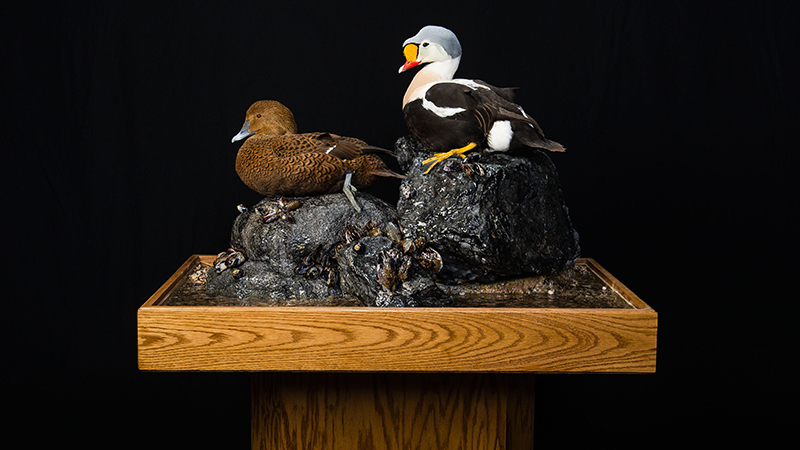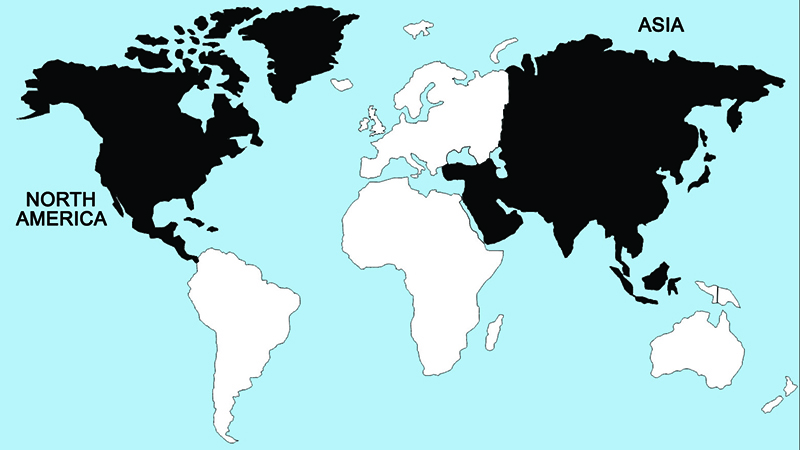King Eider

The king eider is well named; the male in breeding plumage has a magnificent bluish hood that is capped in front by a bright orange-red knob extending from the forehead to the nostrils and outlined in black. The eyes are also outlined from below in black, and in contrast to the common eider and spectacled eider, the back plumage is likewise black. The male has a pair of curious sail-like tertial feathers rising from his inner wings, which, unlike those of the mandarin duck, are constantly held aloft as the male is swimming. The females have a contrasting dark and light brown plumage somewhat like that of the common eider, but the markings are more crescent-shaped rather than tending toward vertical barring. In both sexes, the feathers of the cheeks do not reach as far forward as in the common eider. As in that species, males in eclipse and first-year males tend to be blackish in color, rather than resembling the brown females.
Like common eiders, king eiders have nearly circumpolar breeding ranges, although they don't normally breed in Scandinavia or Iceland. Their courtship calls and vocalizations also recall those of common eiders, and these two similar species have been reported to hybridize occasionally. The start of the egg-laying season occurs as soon as coastal tundra areas begin to become snow-free. Eggs are laid in dry-land nests, sometimes a quarter mile (0.5 km) or more from water. As soon as egg-laying is finished, the males begin to head back to sea, often moving to common molting areas hundreds of miles away. The clutch of about five eggs is incubated for 22–24 days, and the young probably require seven to eight weeks to fledge.
Regions Birds Are Found

Collection Location & Year
U.S. - Alaska 2001
Taxonomy
| Order | Anseriformes |
|---|---|
| Family | Anatidae |
| Tribe | Mergini |
| Species | Somateria |
| Genus | spectabilis |
Gender
Female & Male
References
- Johnsgard, P. A. 1975a. North American Game Birds of Upland and Shoreline. Lincoln, NE: Univ. of Nebraska Press.
- Johnsgard, P. A. 1978. Ducks, Geese and Swans of the World. Lincoln, NE: Univ. of Nebraska Press.
- Elliot, A., J. del Hoyo, J. Sargatal, and C. Imboden, eds. 1992. Handbook of Birds of the World. Vol. 1 (Ostriches to Ducks). Barcelona, Spain: Lynx Editions.
- Kear, J. 2005. Ducks, Geese and Swans. London, UK: Oxford University Press.